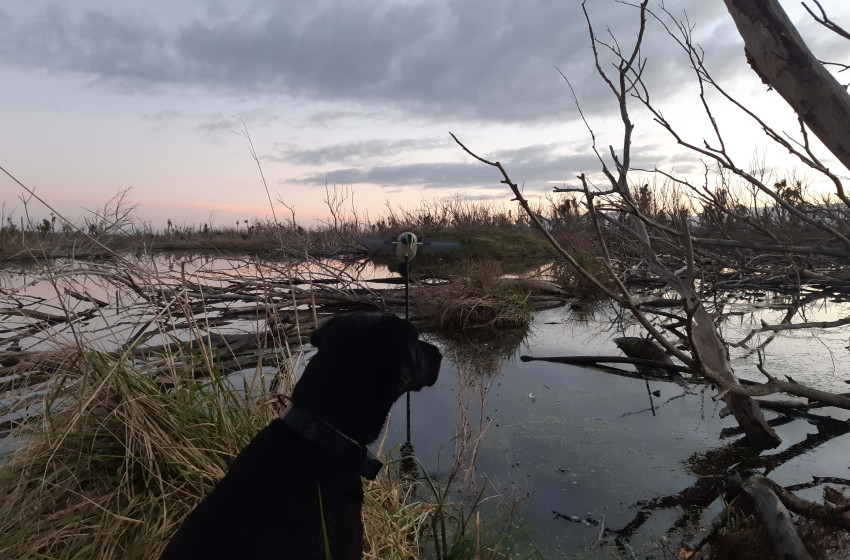Wellington Both Barrels June 2019
- Wellington
- 18/06/2019

Last chance to bag some ducks
This weekend is your last chance to get out and see the main waterfowl season off with a bang, and give the dog one last run on the ducks until next year.
While the weather is looking pretty settled right through the region, traditionally the last weekend of the season sees good numbers of guns out and about, keeping the ducks moving around.
Above Right: Waiting for the evening flight on a very still Wairarapa evening (Photo: Hamish Carnachan).
Position and plan well and you'll see some ducks turn up in the decoys.
As we've mentioned before, with the season all but behind us now and the pressure off, it's a great time to introduce a mate, a sibling, a partner or a child to game bird hunting.
It's only $22 for anadult day licenceso why not start a tradition like many other hunters are and take someone new for a shoot on the last weekend of the season.
This will be the last waterfowl Weekly Hunting Report but we'll update you on upland game opportunities in coming weeks.
We trust you've had a great season and hope to see you out there chasing some pooks, quail or phesant over the coming winter months.
Maimai positioning
Shooting from natural cover is probably a better bet than a maimai at this stage of the season (Photo: Hamish Carnachan).
Your maimai must cover the whole pond for best shooting.
I hear this one all the time and see it on ponds throughout the country – a great big maimai sticking out in the middle of the pond and surrounding area.
The rationale for this is the need many hunters have to be within easy shotgun range of any ducks coming in from any angle.
This sounds like a reasonable strategy that should improve hunting. Right?
Well, I believe it actually reduces hunting success as the season progresses.
Yes, for Opening Week perhaps, a maimai placed to cover the entire area will produce some easy shooting when there are still good numbers of young birds around that haven’t yet learnt that a square thing sticking out in the middle of the pond is trouble.
This success is short lived though. Birds quickly become wary of structures and stay out of range during their circling, then finally land well away. Even on large open waters you see flight paths that stay well away from maimais.
Hunters can lure birds in closer but it is hard work and, while unavoidable in open water areas, it is unnecessary on your pond.
A nice pond in a good 'ducky' area will attract birds throughout the season to feed, shelter and socialise. To attract them the site needs to be private and secure looking.
The traditional centrally-positioned maimai looks dangerous and intimidating to a wary mallard which will ultimately carry on to a safer pond.
To improve hunting opportunities later in the season the maimai needs to be well hidden and not be a focal point that birds will avoid.
To establish the best location for a maimai or the best shooting position on your pond, spend a few mornings and evenings watching birds come and go to identify their favourite flight paths, circuits and landing spots.
Then place the maimai to cover the best shooting distance and angles in morning and evening light.
Keep the maimai as discrete as possible by not sticking up above vegetation or being sky-lined; build low and blend the shape into surrounding live vegetation.
Forget the roof and narrow shooting window, instead keep it open with a clear floor space to stand up and take shots at many angles.
If you do this your shooting will be better and last longer into the season.
- David Moate from Fish & Game NZ magazine
Landowners in the clear for recreational access
WorkSafe has confirmed that people participating in outdoor recreation are responsible for their own risk rather than landowners or businesses.
An article by Stuffreports thatthe landowner or principal in charge is only responsible for risks arising from the work, and is not responsible for the risks associated with the recreational activities